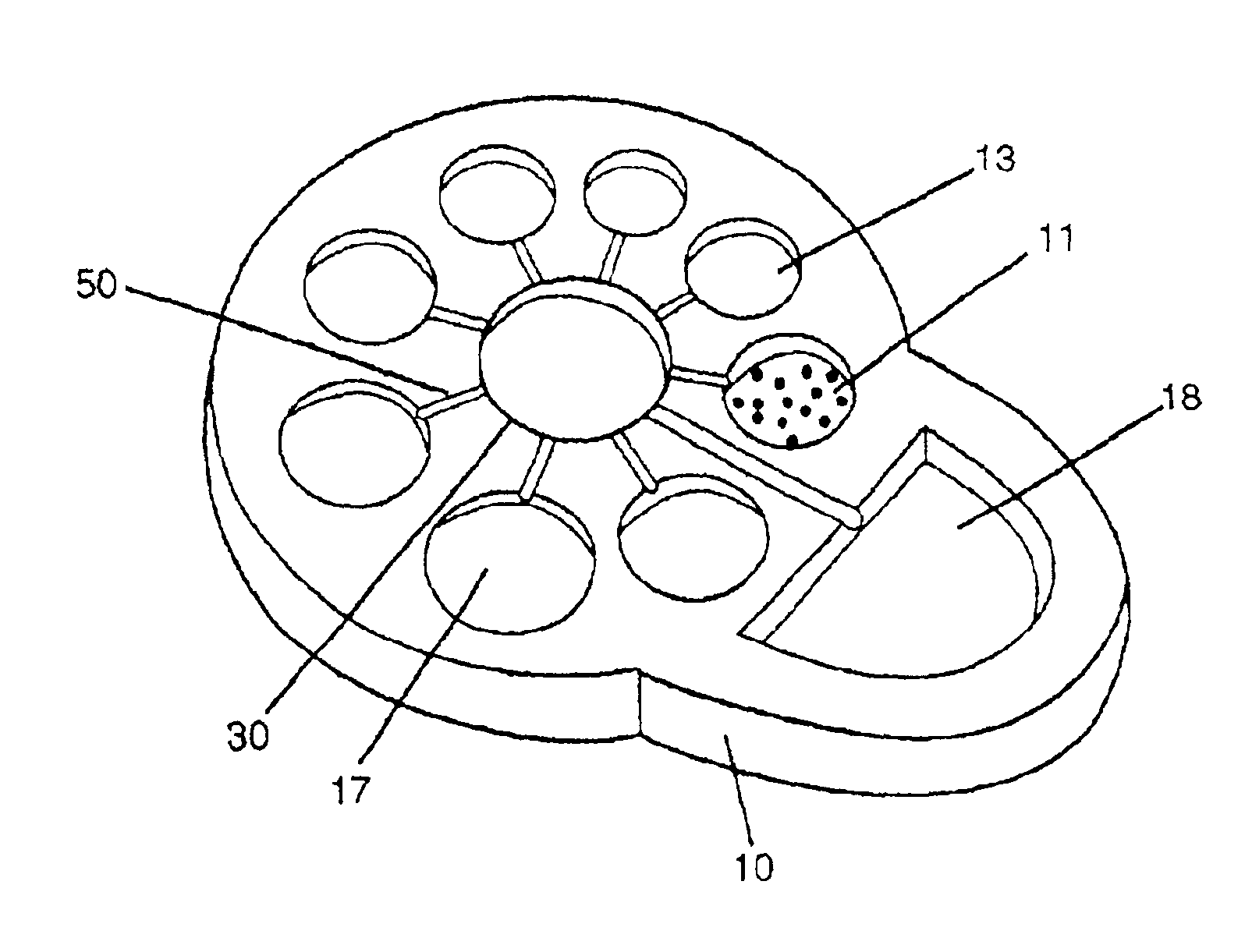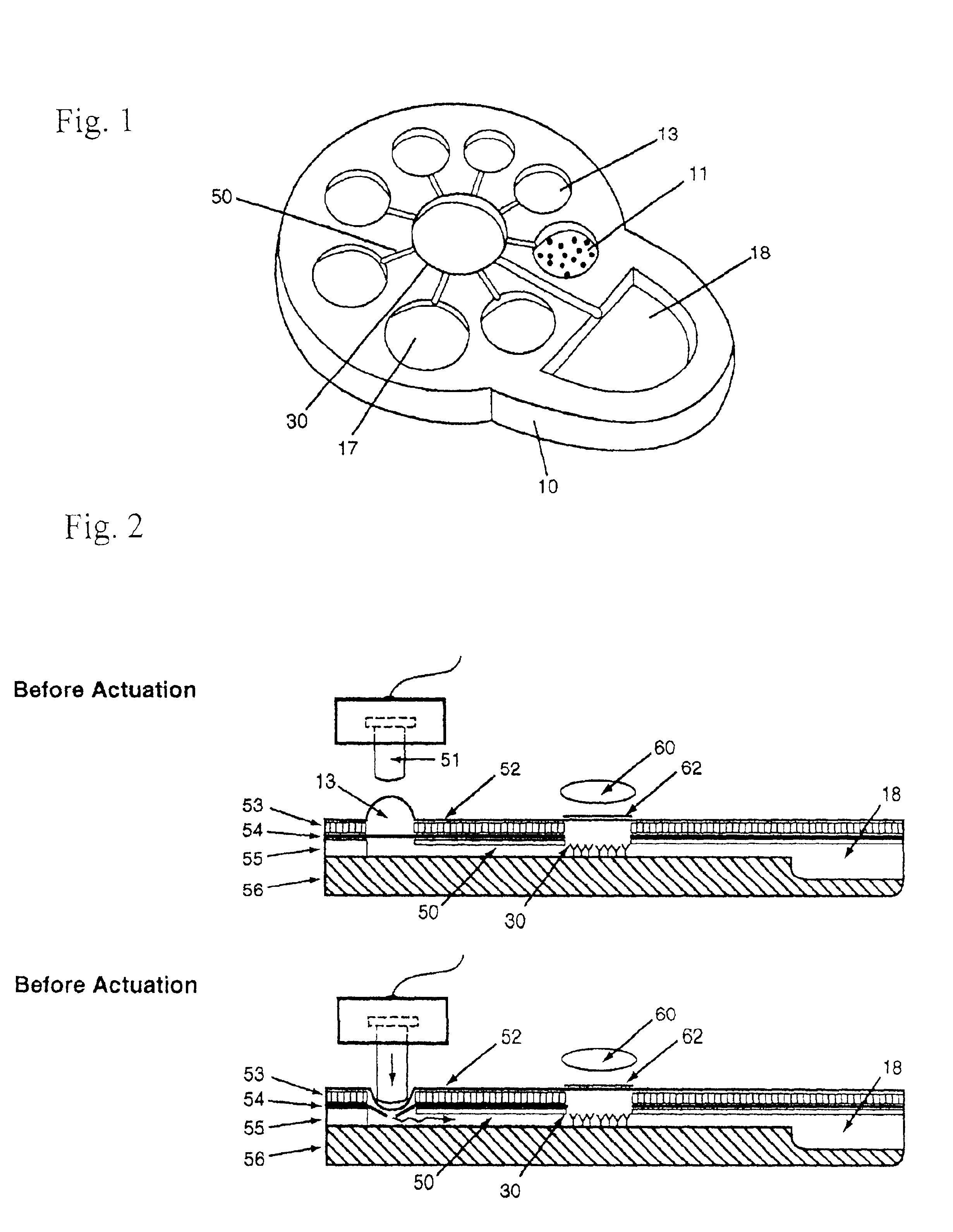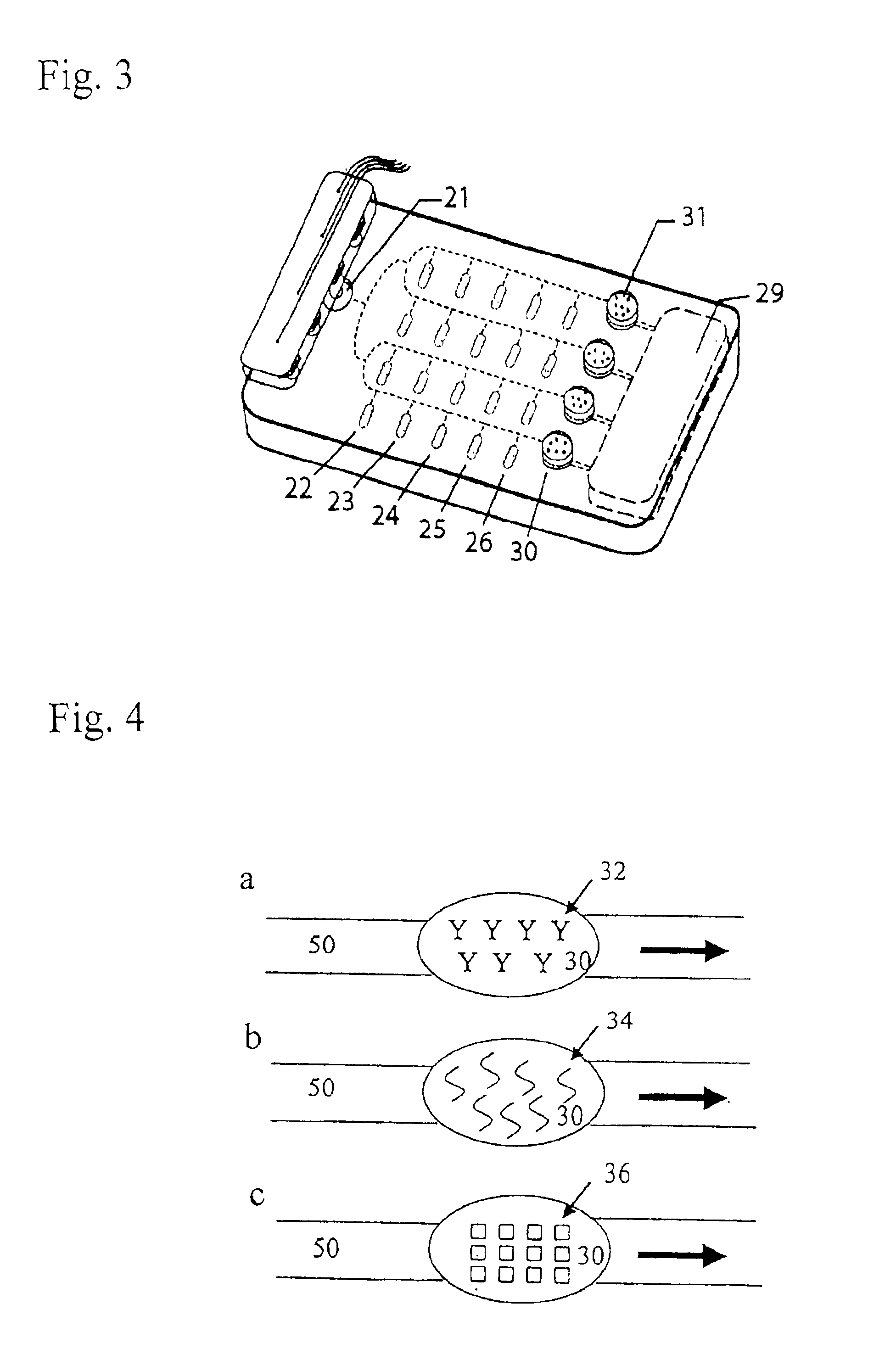Chemiluminescence-based microfluidic biochip
a microfluidic and biochip technology, applied in fluorescence/phosphorescence, laboratory glassware, instruments, etc., can solve the problems of inconvenient quantitative measurement, large system, and inability to use near-patient-site tests, etc., to achieve accurate and reproducible results
- Summary
- Abstract
- Description
- Claims
- Application Information
AI Technical Summary
Benefits of technology
Problems solved by technology
Method used
Image
Examples
Embodiment Construction
[0020]The invention is hereinafter described primarily with respect to the use of automatic microfluidic biochip technology and chemically or biologically triggered luminescence to provide amplified signal for biological analyte detection. The example shown in FIG. 1 is a self-contained microfluidic-based luminescence biochip that is formed by bounding layers of polymer materials with patterned compartments and microchannels. The biochip 10 has a plurality of compartments and interconnecting microchannels 50, a dimension between 10 μm-3 mm, and the compartments having storage means for a plurality of samples 11, reagents 13, luminescent substrates 17, reaction site 30, and waste 18. The sample is selected from a group consisting of proteins, antibodies, antigens, hormones, biological cells, and nucleic acids. The reagents are enzyme conjugates (enzyme labeled -antibody, -antigen, -oligonucleotide, -proteins, -streptavidin, etc.), washing buffers, bDNA amplifier, dilution buffers, an...
PUM
| Property | Measurement | Unit |
|---|---|---|
| Volume | aaaaa | aaaaa |
| Chemiluminescence | aaaaa | aaaaa |
| Luminescence | aaaaa | aaaaa |
Abstract
Description
Claims
Application Information
 Login to View More
Login to View More - R&D
- Intellectual Property
- Life Sciences
- Materials
- Tech Scout
- Unparalleled Data Quality
- Higher Quality Content
- 60% Fewer Hallucinations
Browse by: Latest US Patents, China's latest patents, Technical Efficacy Thesaurus, Application Domain, Technology Topic, Popular Technical Reports.
© 2025 PatSnap. All rights reserved.Legal|Privacy policy|Modern Slavery Act Transparency Statement|Sitemap|About US| Contact US: help@patsnap.com



